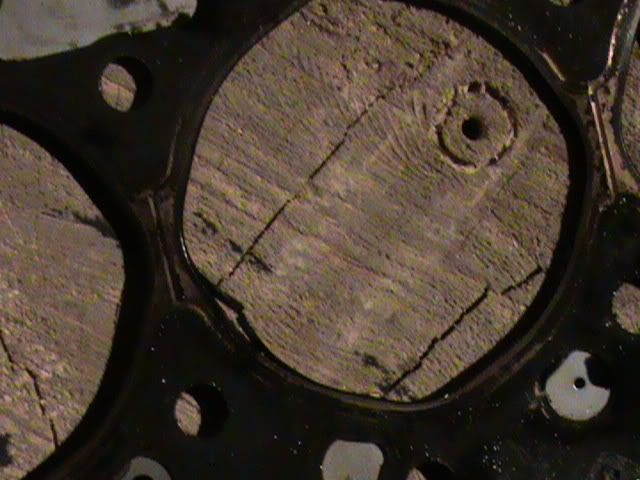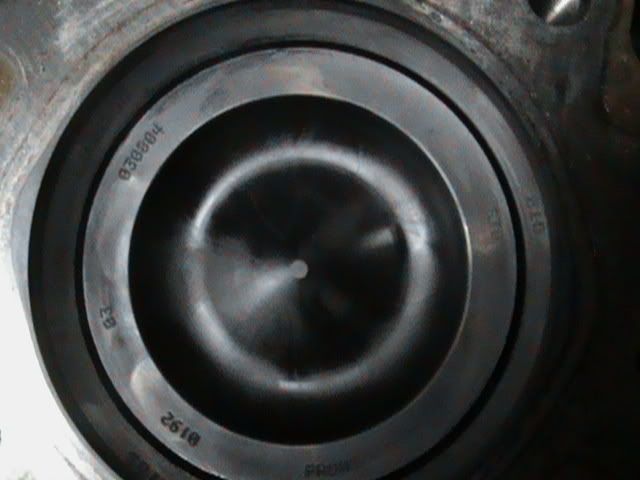paulb
New member
- Joined
- Jul 14, 2006
- Messages
- 1,673
At the end of this season of racing I started to get some combustion gases in the coolant. It would only happen after a couple of all out passes. After that the level in the overflow jug would go up by about 4 inches. Other symptoms were that the truck didn't spool as well when staging, and mph in the 1/4 mile was a little lower then earlier. Here is a picture of #2 cylinder on the head gasket:

As you can see a piece of the gasket is blown inward towards the cylinder. #4 cylinder showed signs of the same thing happening but not as bad. This was after about 200 1/4 mile passes, all of them in the 11's, most of them low 11's. I installed ARP New Age 625+ studs before any passes were made on the truck. The studs were torqued to 160ft lbs. The truck makes ~ 830hp, running #2 only, and has not had nitrous or any other power added run through it yet. It runs 82psi of boost, with 38 being made on the bottom turbo.
In short I don't think that anything caused the head gasket to fail other then pure hp. The timing wasn't over advanced, and the pistons don't show signs of excess heat. Here is a pic of a piston top:

That was taken as it looked when the head came off, before clean up. I'm very impressed with that.
Oh, yeah... I won the NHRA division 6 divisional race with the blown head gasket... :hehe:
Paul

As you can see a piece of the gasket is blown inward towards the cylinder. #4 cylinder showed signs of the same thing happening but not as bad. This was after about 200 1/4 mile passes, all of them in the 11's, most of them low 11's. I installed ARP New Age 625+ studs before any passes were made on the truck. The studs were torqued to 160ft lbs. The truck makes ~ 830hp, running #2 only, and has not had nitrous or any other power added run through it yet. It runs 82psi of boost, with 38 being made on the bottom turbo.
In short I don't think that anything caused the head gasket to fail other then pure hp. The timing wasn't over advanced, and the pistons don't show signs of excess heat. Here is a pic of a piston top:

That was taken as it looked when the head came off, before clean up. I'm very impressed with that.
Oh, yeah... I won the NHRA division 6 divisional race with the blown head gasket... :hehe:
Paul
